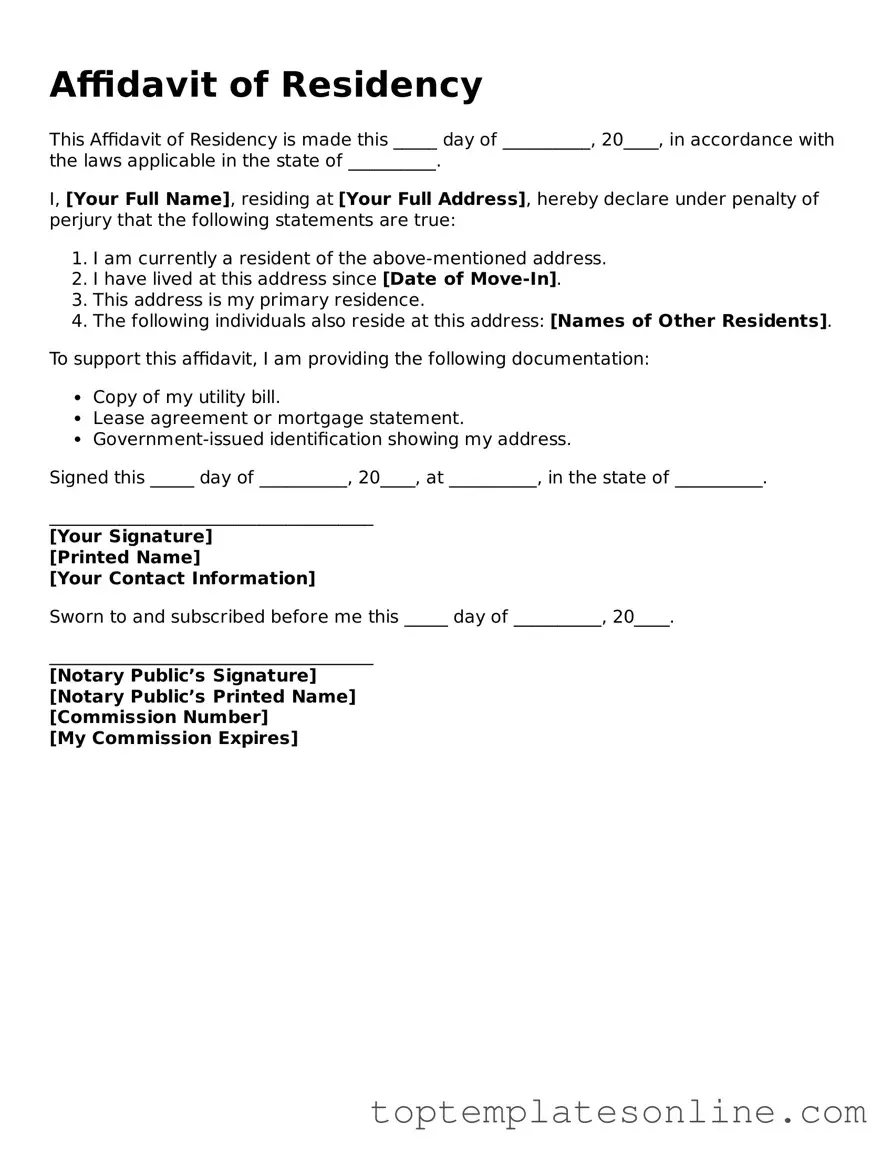Attorney-Approved Affidavit of Residency Form
The Affidavit of Residency form is a legal document that individuals use to confirm their place of residence. This form can be essential for various purposes, such as enrolling in school or applying for certain government benefits. By providing accurate information, residents help ensure that they receive the appropriate services and support in their community.
Customize Affidavit of Residency Here
